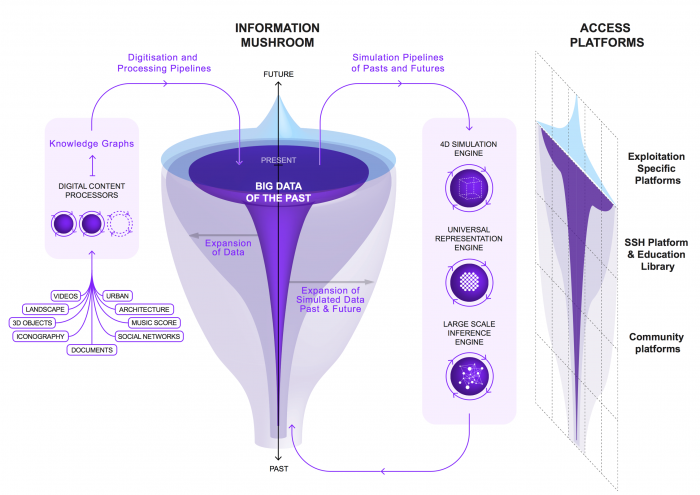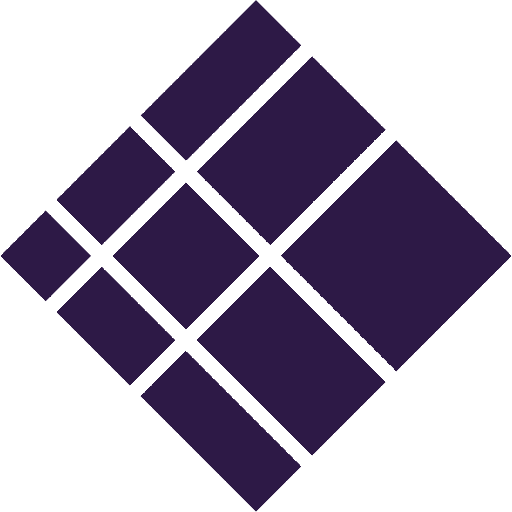TMO’s third virtual approach to our members and the public was focussing on the elements necessary to build a Time Machine
About 40 participants followed the webinar by TMO president Frédéric Kaplan and Chief Technical Officer Daniel Jeller, introducing TMO’s plans and tools to implement, monitor and evaluate the actual building of a Time Machine.
The idea of the Time Machine is based on the concept of the Big Data of the Past. There is a lot of data accessible about the present, but the further we go back into the past, the less data we have. This “information mushroom” shall be enlarged by the the Time Machine Network – filling missing gaps and increasing the density of accessible historic data via large-scale digitisation activities as well as through other types of processes like simulations.

The core software components of the Time Machine shall be:
 Data Graph
Data Graph
= the central component of the Time Machine, containing all the information modelled in the Time Machine. The graph is constructed both manually using editing Apps and automatically through the processing of the Digital Content Processor. Apps permit to visualise and edit the Data Graph, thus performing Internal (e.g. inclusion of Nodes and Links) and External Operations (e.g. Visualisation).
 4D Map
4D Map
= the second central component of the Time Machine. It plots both ongoing projects and the dataset of these projects. This means that the 4D Map is both the map where activities can be followed and the map aggregating results. The density of the 4D Map is not uniformed. In particular some zones may be modelled only in 3D, 2D and even 1D, as a list of included elements. The 4D Map includes a layer of Municipalities on which Local Time Machines can be anchored. The 4D Map can be navigated using the different 4D interfaces.
 Code Library
Code Library
= a library accessible in several programming language regrouping key Operators function for processing Data in the Time Machine Environment.
 Project Repository
Project Repository
= monitors all the active projects of the Time Machine…
Time Machine Projects
– are usually conducted by institutions but can also be launched by individuals
– may be new or a documentation of earlier projects
– mine sources and are intended to ingest their extracted data into the common Data Graph
– are associated with a zone of coverage that associates them with Local Time Machines, producing content for Geo-Entitites
– may also produce intermediary datasets that can be downloaded even if they are not yet integrated in the Data Graph
– can also develop Apps that interact with the 4D Map and the Data Graph
– can contribute to the Code Library by working on the GitHub repository of the Time Machine to produce new Operators.
These different objectives are non-exclusive from one another.
… But how to find the best technical solutions for these elements?
The TMO intends to use the concept of Requests for Comments (RFCs) to constantly evaluate, optimise and implement different stages of development for the above mentioned software components. Learn more about that by (re-)viewing the webinar and accompanying presentations: